Secrets of sustainable cities
With billions of people moving to cities in the next few decades we are looking at the secrets for making cities sustainable, from a virtual world to a World War 2 air raid shelter. Plus in the news, how the Amazon could disappear faster than we expect, what territorial gorillas can teach us about ourselves, and would you shop in a place that didn’t have tills...
In this episode

00:56 - Modelling the coronavirus outbreak
Modelling the coronavirus outbreak
Jordan Skittrall, University of Cambridge
The new coronavirus responsible for the outbreak of Covid-19 disease remains steadfastly at the top of the news agenda. And in the last week or so, the focus has moved from the far East to Europe, which is now regarded as the epicentre of the outbreak. But, unlike some of our European neighbours - and other nations internationally, which have locked down their countries, restricted people movements, closed schools and businesses, and banned large social gatherings, the UK has delayed instituting many of these measures. But is this the right approach? The strategy being followed is based on mathematical models of how diseases spread, together with assumptions about how long people can reasonably be expected to comply with various interventions. Impacts on the economy and health service are also taken into account. Jordan Skitrall is an infectious diseases doctor and a mathematician specialising in modelling disease spread at Cambridge University. Chris Smith asked him how maths is being used to understand and plan for the spread of the new coronavirus...
Jordan - One way we often think about this is a mathematical concept called R0. The basic reproduction number, and R0 is the answer to the question: On average, if we had a person infected with this disease in a population, all of whom are susceptible to it and can get it, how many people would it go on infect? And at the beginning of the disease outbreak, when we're able to work out how many new infections there appear to be for each single person who's getting the infection, because we're able to follow them all up, we can just count the number of people getting infections. As long as we're able to trace the people who might've got the infection from the first person with the disease.
Chris - The UK government, when they did various press announcements around this said; we anticipate, on a worst case basis, 80% of the population will get this. Where did they get that number from? How did they arrive at that?
Jordan - This is not so much a question of how fast is it going to spread throughout the population, as when it's finished spreading, how many people have it. And of course if you have something that spreads very well through a population, eventually everyone's going to have it. So what the question comes down to, is more of an issue of how many people will there be left when the disease is no longer capable of spreading. And there are two factors in that. One is you have some people in a population who are less susceptible, perhaps because they're less connected to other people in the population. But the other thing is that as more and more people get the disease in the population, they become immune to that disease afterwards, and at that point they can no longer pass it on. This is another way reducing the effective reproduction number, and that's the idea behind immunisation as well.
Chris - Essentially then, the infection creates its own herd immunity effect, where eventually the distance as it were, between susceptible individuals becomes so great that the virus just can't sustain a transmission chain anymore, in order to get to that final 20% at least in its first movement through a population.
Jordan - Precisely. And you've alluded in that last comment, to what we see historically with other viruses such as measles, where what happens is it spreads very efficiently. So the basic reproduction number of measles is somewhere around 10, and if you have a completely susceptible population, it goes through the entire population very quickly. But then because pretty much everybody has had it, it can no longer sustain. And so what happens is a little while down the line, typically a few years, where more people have been born, you get another outbreak of that same disease.
Chris - So when the chief medical officer says; we're going to institute various mechanisms, which might include things like closing schools, closing universities, stopping people moving on public transport, that will be informed by some point on the model where people will have said; at this point, if we intervene, it will actually have a meaningful effect, which is what's informing why they haven't yet just followed suit with other countries in Europe, say?
Jordan - Exactly. Doing this kind of intervention will have an effect later on. You could say, well why aren't we doing it now? Because it will have an effect earlier on. But if we reduce the rate of increase from a small number of cases, we still get that small number of cases.
Chris - When you were saying the rate of change, we're talking about really how steeply the graph is of cases, how fast it's climbing? And if you intervene too early, you're just changing a small number to another small number. Whereas if you go in at the right time, when it's getting really steep and about to climb really rapidly, and you bend the curve there, actually the change you're going to make is going to be more dramatic.
Jordan - Exactly. And so you have to ask the question, when is the best time to do this? Bearing in mind that it's already spreading throughout the population. In an ideal world, you might say; well, we should all go home and shut ourselves in our individual rooms for a number of weeks. Yes, that would slow things down the most, but that's not entirely realistic.
Chris - Is that not just kicking the virological can down the road. Because I'm a susceptible individual now. If I go and shut myself in my bedroom for two weeks, I'm going to come back two weeks from now, still a susceptible individual and I'll just catch it then won't I?
Jordan - The answer is yes, but, one is in relation to that question you asked earlier about the total number of people who eventually get infected, and whether it might be possible to change that, because you might take some of these people who are less connected, who would have got the disease and just push them over this threshold to not getting it. And the other question is one of when people are going to get the disease. This relates to how are we going to treat people for this disease. Some people are going to require supportive treatments in hospital, things like being put on oxygen, and possibly more invasive treatment than that. And bearing in mind that we have assessed the number of intensive care beds. What we want to try to make sure is that we have the highest number of beds available for the most people. If we have the option between two people having the disease at the same time, and needing the same bed or two people having the disease at different times, and being able to occupy the bed in sequence, one would imagine that the outcomes are going to be better if we have these two people occupying the bed in sequence rather than trying to lie on top of each other.
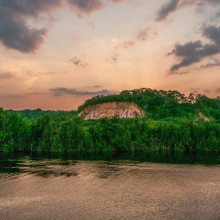
07:19 - Ecosystems collapse faster than thought
Ecosystems collapse faster than thought
Simon Willcock, University of Bangor
Climate change is always a worry, and with it is the worry of losing the ecosystems we have around the planet, from the Amazon Rainforest to the great Barrier Reef in Australia. New research out this week in Nature Communications has shown that once an ecosystem is past a certain “tipping point”, that ecosystem will collapse faster than previously thought. Meaning that the Amazon could collapse into grassy savannah in just a few decades, once past that point. To learn more about how they came to these conclusions, Adam Murphy spoke to Simon Willcock from the University of Bangor…
Simon - What we discovered is that the size of an ecosystem relates to how long that ecosystem would take to collapse, and this isn't linear like you might expect, so that basically, a 10 kilometer forest would collapse quicker than you would expect looking at a five kilometer forest.
Adam - What did you do to pull that answer together? What kind of experiments did you do? Models did you create?
Simon - So the study is basically in two parts. The first part is simpler and much less geeky. In that part we looked at data from all across the world, of ecosystems that had collapsed. Some of these were really small, so for example, we had a lake in a park in Australia, and some of them were absolutely massive, so like the desertification of the Sahel in Northern Africa, and from this we had the dates the collapse started, the dates the collapse finished, and obviously the area of the site. So then we, from these real world data, created a pattern and saw a relationship relating the size of the ecosystem to the speed of the collapse. Then it got a bit more complicated in the second part of our study, because we'd identified this relationship, but we didn't really understand how it worked. So we built a series of computer models, modeling various systems from things like predation. Wolves eating sheep who in turn eat grass, to other models for example, of social networks. So how our rumour might spread throughout society and we use these models to try and give us some insight into why this pattern occurs.
Adam - When it crosses over that tipping point. Is there anything to do to bring it back or is it a ball rolling down a hill kind of job?
Simon - Ball rolling down the hill is a really good analogy, because you can push a ball back up the hill, but it's a lot easier to A, stop the ball rolling down the hill in the first place, or B, catch it when it's near the top because then you only have to push it a little bit uphill. If you wait and let the system collapse, and go the ball roll all the way down the Hill, then you can get it back. You just have to put in a lot more effort.
Adam - And what does this mean for ecosystems around the world right now that might be in danger like the Amazon rainforest. What does it mean there?
Simon - Our result for ecosystems across the world, means that they potentially could collapse a lot quicker than you might imagine. So in real terms, this means that we need to put in a lot more effort into ensuring that we use these ecosystems sustainably, that we're not damaging them through things like climate change or pollution. And if we are damaging them and we do detect a tipping point occurring, we need to be in a position where collectively as a society we can act quickly to address this.
Adam - Can we detect tipping points kind of in the present or is it something we'll only be able to see in hindsight?
Simon - It's a lot easier to spot them in hindsight, but you can predict them. It's just quite difficult. There are two things you can look out for in particular. One of them is called flickering, and the other one is called critical slowing down. Flickering it's much like, imagine a candle going out. If there's two states, the candle is lit, and the candle is out. When the candle is almost going out, say in a breeze, sometimes the flame goes really small, and then big again and really small and then big again. That is literally flickering, and an ecosystem does the same thing. So when it's close to a tipping point, you might have a forest, part of the forest might turn into grassland because there was a fire, and then it would recover. And then another part would do that. And the more frequent these flickers, the closer we think we are to a tipping point. Critical slowing down is where, the time, effectively it takes to recover. If the forest recovered in two years the first time it happened, but then maybe in 10 years the second time it happened, then that would also indicate you were getting closer to a tipping point.
Adam - What's next? What's the next step in this research?
Simon - There's quite a lot of unanswered questions in this research. Like personally, I'm really interested in the role that biodiversity plays in this. So we discovered a relationship that relates the size of the ecosystem, but it might also matter how many species are in those ecosystems. So potentially more biodiverse ecosystems might collapse slower or even faster. We don't really know right now, but I'd love to look into it.
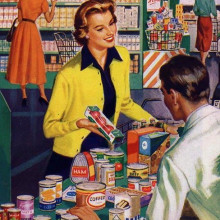
13:29 - Shopping without tills
Shopping without tills
Peter Cowley, Invested Investor
Tech giant Amazon is about to start offering its till free technology to other high street stores. But how can a store be till free, and what implications does this have for how we shop? Tech correspondent and angel investor Peter Cowley spoke to Georgia Mills about how a till-free shop would work...
Peter - Yes, the technology is actually called "Just Walk Out". It's an experiment that Amazon started about two or three years ago and it went into "production" in 2018. So there are now 25 stores around the US, though none outside that. The way it works is you have an app on your phone - you assume you have the app - you scan on entry, you are then tracked around the store. Not your face; not with your phone position, because you might not have a phone on it; it's to do with your clothing, your size and your gait. So you're tracked round, and then you pick items up off the shelf which has a weighing sensor on it, and put it in your bag or hold it your hand, and then walk on, collect everything, and then you just simply walk out of the store.
Georgia - So are there just cameras around the whole store, just monitoring every movement?
Peter - Correct. So there are a number of cameras, which are quite complex I suspect, and they sort of have technology in the cameras itself, rather than just going straight to the cloud, which then hands over the people to the next camera. It probably reads occasionally if you're in the same clothes, the same size, et cetera, and walking the same way. It might get confused.
Georgia - So if a basketball team all go in at the same time...
Peter - Exactly, exactly! Or you could joke about sort of having a, you know, coming out in a wheelchair and going in without the wheelchair or something. So that's the idea, so you can effectively pick up anything you want.
Georgia - Right. And then something tells you what's been taken off the shelves.
Peter - Correct. So what it's doing is building picture of the item, which it will recognise, and once it's done that it then knows that human being it's following has that much with them. But if you take something out of your bag and put it back on the shelf, it'll reweigh that and decide you've put it back.
Georgia - Right. And so I'm guessing if there are stores that work on this, it works and you can't confuse it. Taking things around, putting them back in different places...
Peter - Clearly, although it's not all over the internet, an awful lot of that's been tried. Both internally for the two years when they had the employees all trying that sort of thing, I suspect changing their clothes, taking their jumpers off, and everything else, in order to confuse it. Because what they're trying to do, of course: you don't want too much theft, so this is where you take it off the shelf and it doesn't see that you've hidden it somewhere. And conversely, which is almost more important, you don't want people falsely accused of shoplifting. And it's quite important that the app apparently will tell you what you've bought; so before you've left the store door you can check that if you wish, if you don't trust it. And then you can argue much more easily when you're inside the store than when you've got home.
Georgia - Right. And how does the actual paying bit happen? Does the money, just when you leave the store, does the money just fly out of your account?
Peter - Exactly in the same... yes, exactly as if it comes out... you've got a credit card attached your Amazon account and if you're using the cash version, you will have a cashier there, which will... they've determined that that person with that shape, et cetera, has bought that amount and then you'll pay for that.
Georgia - So does this make shoplifting harder?
Peter - One suspects so. In fact the amount of shoplifting the States, or worldwide, is quite a lot. It's about $50 billion lost worldwide, which is about 1.3%. If you can reduce that, that's good. So I suspect it will reduce shoplifting by the consumer. Of course, an awful lot of shops' 'shrinkage', as it's called, actually happens by staff.
Georgia - Right. So is that the main impetus for doing this? Because I'm guessing it's not cheap or easy to turn your shop into a till free.
Peter - Yeah. They're talking about about a million dollars, because you've got the cameras and you've got all the shelves, and you need weighing, and so on. And there's two drivers. One is for us as consumers because we can just go in and pick up a sandwich, a bottle of milk or whatever, and walk straight out, so we don't have to queue up or scan stuff, et cetera. And the secondary of course is for the stores because that way they can reduce the staffing, the checkout staffing. You've still got other staff because you'll have people hanging around helping people. And it's less space of course as well. You know, the checkouts all take space up, don't they?
Georgia - I mean I'm just thinking, the number of times I'm going to buy like a giant pack of chocolate and I get to the tail and I'm like, "no, this is foolish purchase." It sounds like it's going to make impulse purchasing a lot easier.
Peter - Yes! In fact there is some figure that says actually the shops sell more because of this. And I don't think it's because of maybe people, I don't know, not being told by the shop assistant "are you sure you want that?" I would hope they don't. It's because it's more convenient. Nip in and walk out again.
Georgia - Are there any other downsides or benefits we haven't discussed?
Peter - I don't think so. I mean it's to do with cost saving, it's to do with convenience. The downside of course is the loss of jobs potentially. The other thing, the big thing of course, is data. As always with these tech giants we're giving away more and more data, and that suspect. What Amazon has done in the last week while we are talking about it is they've released it to other shop chains. Obviously they'll charge for that, it won't be free, but Amazon will be collecting that data so Amazon will know even more about what our preferences are.
Georgia - Right. So even if you're choosing not to shop with Amazon, if you go into a shop with this technology, they'll be still getting your data.
Peter - I assume so depending on the contract between the shop and Amazon, but I suspect that will be the case.
Georgia - How common do you think this will be? Just briefly.
Peter - I think in time for smaller stores it will be extremely common, but I don't think you'll be doing your weekly shop there. But then with the coronavirus around at the moment a lot of the weekend shopping is going online anyway, isn't it?
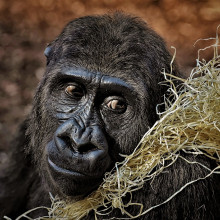
18:37 - Gorillas need their space
Gorillas need their space
Gorillas were previously thought to roam widely and mingle freely. But a new study in Scientific Reports done in the Republic of Congo suggests that groups of gorillas actually get territorial, although in a gentle way that hints at parts of our own human nature. While their relatives the chimpanzees get pretty violent over personal space, gorillas seem to take a more gradual approach - much like you might invite an acquaintance into your sitting room, but get annoyed if they start poking around in the upstairs closet. Phil Sansom spoke to the lead author, Cambridge University’s Robin Morrison…
Robin - We found that gorilla groups are avoiding their neighbours, and they do this by avoiding their neighbour's home range. They seem to have at least some level of awareness of where their neighbours' home ranges are and they then avoid those areas.
Phil - Is that surprising? I mean, did you not expect gorillas to have this kind of territory?
Robin - We suspected it maybe, but it's something that's not been seen in the past. Gorillas are quite different to a lot of other apes in that they have tolerant interactions with their neighbours quite often. So you can even see multiple groups feeding quite happily in the same tree together without a lot of aggression going on. For those reasons it seemed a bit unusual, but actually what we're thinking is maybe it's a lot more similar to what we see in humans, where we have our personal space but then there are also public areas where we'll interact quite friendli-ly.
Phil - Tell me about these gorillas that you studied. Where are they?
Robin - In Republic of Congo. So it's Western lowland gorillas. And one of the reasons we're particularly excited about this project is it's really hard to study them. So they can take about five years to become used to humans, and so there's a really small number of groups that are habituated to human presence. And so this is why we needed to monitor them remotely, so that essentially they wouldn't run away from us and we could record what they were doing when there were no humans around.
Phil - Is this way out into an area that's not populated by humans at all?
Robin - About 15 kilometres from the nearest village. From there on out it gets quite remote. So sometimes we'd be out camping in the middle of rainforest where there were no humans and no access to anything like electricity, or running water, or a house. Quite exciting!
Phil - And how are you actually keeping track of them if you don't want them to run away and get scared of you?
Robin - We had kind of a network of these camera traps out all over the forest. So these are motion-activated cameras. Not like any sort of physical trap, it's a motion-activated camera.
Phil - Not a bear trap that's got a camera on?
Robin - Yeah, non-invasive, absolutely no harm to the gorillas.
Phil - How many groups and how many gorillas?
Robin - Oof, what a question. It was about 50 kilometres square total, and we got good data on about eight different groups. And so this was just over a hundred different gorillas.
Phil - Now how do you even keep track of a hundred different gorillas? Because call me ignorant but gorillas mostly look the same to me.
Robin - Yes, it's very difficult I would say. I'm okay at recognising gorillas, but when it comes to recognising whether a gorilla you've never seen is one that maybe you saw once? That's pretty difficult. So we use the shapes of their faces, and especially patterns around their noses and their brow ridges, to distinguish between them. There's been some developments in AI, but actually right now when we did this study, what we found is that humans were still better than machines at recognising gorillas. It just took some very skilled people!
Phil - And is this where you started to see these patterns?
Robin - Yes, yeah. So we gradually built up this database of, "okay, this gorilla was here on this day, and then they moved over here, and then they moved over here." They would very rarely turn up in the same camera on the same day as another group, so it seemed to be that they were avoiding each other. Also, the deeper into another group's home range they got, the less likely they were to turn up.
Phil - Did all the groups do the same thing?
Robin - It's hard to say from our analysis, but more from personal experience of following certain groups we do see that there are groups that they seem to hang out more with.
Phil - Oh, so you did actually follow some groups out in the wild?
Robin - That's not part of this study, but we also do. So there's three groups in that area that we follow daily.
Phil - Were there any gorillas that you gave names to or bonded with?
Robin - Yes, yeah, of course. I mean it's hard to study gorillas and not become attached. And for me, I spent about six months following this group, and there was one gorilla that was kind of a young male that they called Robigus. He was the only one that wouldn't run away from me, and so gradually we'd get to know this family. So her for me is my all-time favourite gorilla.
Phil - How do you spell that?
Robin - R O B I G U S.
Phil - Ah, sort of like your name!
Robin - My boss chose to name him after me, to some extent, because he seemed to be particularly friendly towards me.
Phil - Now when it came to the groups that were avoiding each other, you said at the start this might say something about the way we humans behave. Can you explain that?
Robin - Yes. Often when we're trying to understand human behaviour we're comparing that with our close evolutionary relatives; so the chimpanzees, gorillas, orangutans. Chimpanzees are extremely territorial and they can even be very violent defending these territories. And some people have suggested that this might show where kind of the evolutionary origins of human warfare come from. But in contrast these gorillas show a much more gradual defence of space, much more tolerance in some areas and aggression in others. And so this could potentially show commonalities with humans where we can be quite aggressive sometimes, but also have these long term affiliative relationships between different groups. And these are really important for helping us understand large scale cooperation, which is really important to the human species. It's one of our fundamental behaviours.

24:43 - St Patrick's Day scientists
St Patrick's Day scientists
Adam Murphy’s been looking back home with this tribute to Irish science…
It’s March which means St Patrick’s Day is now upon us.
And although the parades have been cancelled, there’s no reason not to celebrate, and here on the Naked Scientists, that means looking at the best of Irish science.
Robert Boyle was a 17th Century chemist, born in Waterford, and was a pioneering chemist. Boyle’s law, which relates how the pressure of a gas changes with its volume, is still taught to schoolkids today.
In a world where climate change is becoming more and more of an issue, its worth remembering John Tyndall, who did incredible work on the greenhouse effect and showed how much heat the different gases in our atmosphere can trap.
Kathleen Lonsdale, from Kildare, did groundbreaking work in using X-Rays to learn about the shape and structure of different molecules, like benzene.
Given that you need electricity to listen to what I’m saying, You should give a nod to George Stoney, who did work on electricity, and even gave us the word for the fundamental single unit of electricity, the electron.
Heading into space, Jocelyn Bell Burnell was the first person to spot evidence for pulsars, a special kind of spinning star made only of particles called neutrons. That discovery won the Nobel Prize...although not for Burnell.
And the next time you’re walking headfirst into a strong wind, remember to thank Francis Beaufort from Meath, who came up with a scale that measures wind speed, from light air, to a hurricane.
Ireland has plenty of Nobel prizes in subjects like literature, and peace. But there are also two prizes in the sciences. Ernest Walton won the Nobel Prize in 1951 along with John Cockroft, for being the first people to split the atom.
And in 2015, Irish born scientist William Campbell won the Prize in Physiology and Medicine for his role in discovering drugs for fighting infections caused by roundworms.
So if celebrating Irish culture is a part of your March plans, raise a glass to the scientists of Ireland.
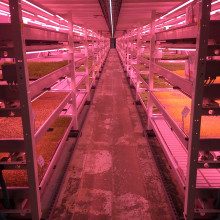
28:12 - Farming under London
Farming under London
Ruchi Choudhary, Alan Turing Institute & Greg Crawford, Growing Underground
In developed countries, 4 out 5 people live in cities, and the whole world is following suit. Population growth, climate change, and resource availability is continuously putting strains on cities. Meanwhile, they also produce 75% of global emissions, largely through its buildings, from building them to heating them. The UK is aiming to be carbon neutral by 2050 though, and to achieve that, we’ve taken a look at some clever engineering solutions. So let’s dig a little deeper in the topic of wasted space, and wasted heat, at a very unusual farm that Adam Murphy’s been visiting...
Adam - 33 meters below the streets of London, in a disused air raid shelter from World War II, is something you might not expect. A pretty large garden! Here, a company called Growing Underground are making use of all the wasted heat and all of the wasted space that a city the size of London will generate. And they're using it to grow tons of greenery that can feed the people on the streets above. Down in the tunnels, I spoke with grower, Greg Crawford about the work they do down there.
Greg - We've got about 14 different varieties at the moment. So pea shoots, red cabbage, micro watercress, coriander, red mustards, broccoli. So you know, we're growing crops down here and 33 meters above us there's people sitting at a table eating our produce. So plants need light water and nutrient -
Adam - Seems like they're all missing down here!
Greg - Well we have LED lighting, we have an irrigation water system with all the nutrients they need. So we're using a growing medium that's made out of recycled carpet. So at the carpet factory, there's always off-cuts and these get re-mixed together and created into half square metre mats. And we grow in that. So it holds the water quite well and it's a material that would otherwise be sent to landfill. So we're re-using it.
Adam - This approach not only uses this space that would otherwise stay derelict, it makes use of the heat given off by cities and can grow all year round un-affected by the seasons deep beneath the earth. And that's not the only reason you might do something like this.
Greg - We use way less water than conventional agriculture. So you don't get the water runoff you do in a field. And we can recycle the water over and over again and keep it clean. Add nutrients and the water will irrigate the bench, go down underneath and be reused the next day.
Adam - But this is just one company, one instance. Can we make use of a city's waste resources on a large scale? Well once we had come out of the tunnels, I sat down and spoke with Ruchi Choudhary, an expert in architectural engineering about the waste made by cities and what we can do about it.
Ruchi - Well, cities naturally have significant amount of resources because wherever there is some amount of consumption, there's a degree of waste. And the kind of waste we are addressing here is either waste in terms of space, physical space, or resources such as energy, water, energy in the form of heat, heat that we consume. But a lot of it also gets wasted because of the process itself. The ground beneath the cities, it's overheating, it's overheating because there's a lot of infrastructure within ground that releases heat. For example, the biggest would be metro tunnels or heated spaces below ground, any kind of heat sources below ground. So if you keep dumping heat into the ground, over time the climate of the underground rises, which can cause problems for groundwater management and sustainability of underground structures. So one way to alleviate this problem is you can actually use that heat for buildings above ground. So growing on the ground is a very good example of using waste or derelict spaces across cities. Other examples could be using, for example, such farms in environments that have excess of heat and excess of CO2. So the most likely example that springs to mind is hospital buildings or schools because these are environments which have a lot of waste heat and they also have a lot of waste CO2, and you can harness them usefully towards what plants need to grow.
Adam - What does a city of the future look like then?
Ruchi - The thing is that right now we have the mandate to move our cities into zero carbon environments. So that means that a lot needs to be changed, a lot needs to be changed in terms of how we operate buildings, how we make buildings, how transport works. And that shift needs to happen now, not gradually but fast. So we should expect some dramatic changes with respect to how we operate buildings, how we commute, how we use or consume cities.
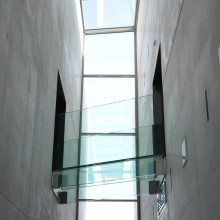
32:44 - Keeping cool without air conditioning
Keeping cool without air conditioning
Shaun Fitzgerald, University of Cambridge,
While we could reuse waste heat underground to grow crops or power our houses, we could use less heating in the first place by using something called natural ventilation. Shaun Fitzgerald, visiting professor of sustainable buildings at the University Cambridge spoke to Georgia Mills about how we could learn from past building design to reduce our dependence on heating and cooling systems...
Shaun - Well I do have a demo and it's a demo that we can do at home in the kitchen and I've got two glasses of orange juice here and some Grenadine. So I'm going to suggest that we think about actually different ventilation strategies using my orange juice, and one is going to be for summer and one is going to be for winter. And the summer one is going to be our tequila sunrise mocktail where we have the Grenadine and we're going to pour it into the glass with the orange juice. But if you pour it in nice and slowly, just down the side of the glass, what you will find is that at the bottom of the glass we have our lovely syrup and this is showing what we call a stratified environment where the Grenadine represents your cool fresh air at the bottom, which is the occupied zone. And the orange juice is the warm air. So this is a great summer drink for a summer ventilation strategy.
Georgia - Right, so the air is sitting on top of each other. They're not mixing.
Shaun - Exactly. So we've got the warm air at the top that we don't like, but we've got the nice cool air that we brought in and that's surrounding us. Whereas in the winter, we don't want actually that classic tequila sunrise. What we want to do is to put it in really quickly and it's all mixed up.
Georgia - Oh yeah, that's terrible. If you served me that in a bar, I'd be furious.
Shaun - So it's a terrible tequila sunrise, but it is a fantastic drink for winter. And that's really the purpose of how we use different ventilation strategies, different natural ventilation strategies. And it's critical that you do different strategies between the seasons in order to derive the benefits of not using fan power, which is the fundamental reason why we like natural ventilation to reduce the energy load.
Georgia - Right, so at the moment in summer when it's warm, we're blasting the air con and that's using loads of energy. In winter, we're super cold, we've got the heating on. You're arguing that there's a better way of doing this. And that's by thinking carefully about how we mix the air, basically. How we shake our cocktails?
Shaun - We are. And indeed, the previous way of doing natural ventilation was to always just bring the cold air in at low level and have a stratified environment. So that in the winter, actually people don't have to use heaters to preheat the incoming cold air. Whereas if you have my bad tequila mocktail here, then I can use all the heat gains that Ruchi alluded to from within the building itself, to actually provide the heating for the cold air. So this is a much lower ventilation energy strategy by using mixing in the winter.
Georgia - Right. And so in the sort of metaphor of these drinks, are we at the bottom of the drink? So where the cold air sits in the summer, that's where we'd be?
Shaun - Exactly. We sit on the bottom. Gravity means that we're going to sit on the floor.
Georgia - Good. Excellent. As it should be. So how do we do this in real life, outside of the drink?
Shaun - So how do we do this in real life? We ensure that in the winter we bring the cold air in at high level, so that when it comes in, it mixes with enough of the warm room air naturally rather like an inverted volcano really. When you have a volcano erupting, what happens is the hot gases pull in, all of the cold air and you then have mixed air in the middle of the volcanic plume five kilometers up. And that's exactly what we want to do in reverse, in the winter. We want to bring cold air in at a high level, make sure it mixes with enough warm room air and you no longer have a cold draft, but you've used the heat from people, IT, lights, to provide the heating source for that cold air. And in the summer you want to do something different. You want to bring the warm air - so it's not as cold in the summer of course, but it's cooler. It's sufficiently cool to be nice - we want to bring that in at low level directly onto the occupants. So you open the windows at low level, to provide inlet ventilation in the summer and close them in the winter and bring the air in from high level. That's it. And that's what they were doing a long time ago with sash windows in Victorian houses in the UK. But they clearly didn't understand actually getting the apertures correctly and all the strategies being automatically controlled.
Georgia - How much energy savings could there be?
Shaun - Well, naturally ventilated buildings can consume a factor of two less than mechanically ventilated buildings overall. Not all of it's to do with just the reduction in fans and pumps, but the way that they're built, they need to be shallower planned so that they have lower lighting loads as well. So factor two reduction. But by applying the right natural ventilation strategy, you can reduce the energy even further. So with this new strategy of changing how you bring the air in between summer and winter, we can save heating bills by a factor of three from one strategy to the other. So it's enormous.
Georgia - So has this been brought in then? This sounds like a great idea.
Shaun - So we discovered this in about 2005 and it has now not only been adopted by buildings with products now in them, but it was adopted by school regulations in 2018. So any new or refurbished school that's going to be ventilated, needs to be thought of as wherever you can, you'd naturally ventilate. And if you're going to naturally ventilate, you need to use my mocktail example here, making sure you change the strategy between winter and summer, so that you mix the incoming cold air with warm room air in the winter to save your heating bills.
Georgia - Excellent. And so this has been actually brought in and implemented for all new schools. That's brilliant. Is it going to be used elsewhere or in other countries? How much could this be applied basically?
Shaun - So other countries with similar climates to the UK are definitely looking at this. We're in touch with those. But it does not apply to all countries. And the reason being is that if you are in a hot, humid summer environment, so if I was in Florida, I can't dehumidify the air naturally and therefore you have to mechanically ventilate in those climates. But a lot of people live in temperate zones. We've gravitated to quite nice places in the world. The North Western seaboard of the US, all of the coastal areas of Europe, they could all use this natural ventilation strategy. And that's what many people are now thinking about doing. So.
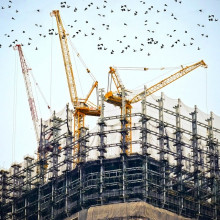
Demolish or adapt?
Hannah Baker, University of Cambridge
What if the greenest building is the one that is already built? Melanie Jans-Singh went down to the Flying Pig pub in Cambridge and spoke with Hannah Baker, to find out more about when to demolish buildings or leave them standing...
Mel - The Flying Pig is the Naked Scientists' old local pub and has been a live music venue for decades. Over the time, there's been some famous people here too, Syd Barrett is said to have met the future pink Floyd member David Gilmore here in the 50s. However, the pub was under public consultation to be demolished last summer. To find out why, I met with Hannah Baker, a researcher at Cambridge University, who studies how the decisions to demolish or adapt buildings are made, and I met her outside The Flying Pig.
Hannah - So it was being considered in terms of demolition because for the whole site they want to provide new offices. They were also, I think, at some point considering housing, and one of the key issues is that if you demolish a building you can provide much larger floor areas. And the developers were saying that although they recognised it had been a live music venue, that use could maybe be put inside a different building, but then because of the reaction of the community they've kept it. And one of my favourite quotes is that this whole idea of heritage being soaked into the walls, the music, and when we go inside, you'll see that there's posters covering absolutely everywhere reflecting this.
Mel - We found a quiet table inside to discuss what is the process of deciding whether to demolish or adapt a building.
Hannah - So initially you would do a number of different assessments of the building. So a key one in terms of heritage is the heritage impact assessment. It looks at its significance and different values attached to that: is it architecturally significant, historically significant, socially significant? Has it got a listing? So is it protected by planning policy? And then you also do, particularly for larger urban regeneration sites, environmental impact assessments.
Mel - So who are the people who do this? Is it the architects or the people who live there and decided they wanted to develop their building?
Hannah - So there was a huge number of stakeholders - people who are affected by the decision. So there's a difference between stakeholders and decision makers. So your decision makers here are going to be mainly your developers and your planners within the local authority. Often your landowners and your developers are the ones that are going to be investing in the site, spending the money to regenerate it, and then obviously they will make the profits from that. But because of the planning system that we have here in the UK, you do need to get planning permission to be able to do that. And at the same time behind the developers, you've got a huge number of people as part of the design team, and so they're the people who calculate whether it will be better to demolish or adapt.
Mel - And so what metric do they use and on what basis do you make that decision?
Hannah - It often comes down to economic viability. They will look at the physical attributes of a building and whether it can be made fit for purpose. So often a building will be demolished, it it's become obsolete so it can't be used anymore. And they will look at things like the floor to ceiling heights, whether or not you can fit in updated services, look at the structure wall arrangement, and that can all determine the costs of intervention.
Mel - It's not just the cost though. When considering the environmental impact of a building, it's a trade-off between the embodied emissions, from the building process and its materials. But new builds could also be more energy efficient to operate. However, a recent study has found that a third of the emissions from office buildings are from these embodied emissions. Architects are therefore campaigning that the "greenest building is the one that already exists" because it's also important to keep that local heritage in the area that people want.
Hannah - So one of the things about where we are at the moment is it is a large urban development site. So we've got The Flying Pig and that seems to be a fairly easy decision now that it will be kept, because of that community campaign to save it and those connections to heritage. But what I actually find interesting is that we also have some big office blocks behind us and to the right of us. And from the looks of it, they're going to be demolished, because they don't have this whole heritage value attached. And if you look at some of the consultation presentations which developers have put out, they do talk about how they're going to consider embodied carbon. But it'd be interesting to see if they actually do a comparison between retaining those buildings, which are already here against the demolishing and new build, or whether it's just they're trying to reduce the material in the new builds. But then when we go back to that embodied carbon argument, potentially, maybe you should keep everything and then decide what goes.

Designing digital twins
Mark Girolami, University of Cambridge, the Alan Turing Institute
From the old to the new, what if instead of building new parts to a city, you could go into a computer and tweak bits of the city, and see what happens before laying a brick, a little like SimCity, it's called a digital twin and Mark Girolami, professor of civil engineering at Cambridge, joined Adam Murphy to chat about this new technology...
Mark - First of all, you need to take two perspectives here. The first is, what is digital and what is the twin? Now, engineering and science, for centuries, have always thought of the idea of a twin, an abstracted notion of some reality that you would want to understand and ultimately control. If you think of things such as the tide predicting machines from William Thompson going way back to the 1840s, that was a twin of the tidal systems that allowed individuals to predict when tides would be in or out, and they could then decide on when to set sail. So that's the whole notion of the twin, the digital component of course is that moving from some sort of physical and mechanical twin of a system that we want to study, to a digital, a computer based representation. And having those two things together, coupling the digital representation with the physical via data, provides us with this whole notion of a digital twin, which is much more different than a classical mathematical model where we would run simulations a bit like SimCity, but we'll never actually be going out and building our city from scratch and seeing if reality actually mirrors what the simulation suggested it would be.
Adam - And then whereabouts do we see this being used? What kind of applications does it have?
Mark - Digital twins are being used right across all of the sciences, right across all of the engineering disciplines. And of course what we're talking about today is urban infrastructure, city planning, regional planning. And we are seeing digital twins from rooms in our building. So what are the environmental conditions like? We heard about the underground farms, there are digital twins of those. How do you remove the heat, how do you control the heat, and how can you use those digital twins to predict the type of yield that the farm would produce? Right up to whole buildings where we have digital replicates of the geometry of the construction of the building, and then of course of the physics as well. And that then extends to whole urban central areas, it extends to cities, to transportation systems, to distribution of energy to the measurement and hopefully the improvement of air conditions.
Adam - How do you go about getting the data that you actually then put into these digital twins?
Mark - So data comes from a number of sources, and the obvious one is sensors. And what we are seeing certainly within city environments and urban environments is an almost "Renaissance" of being able to obtain data at unprecedented scales, that we've never had before. So whole pieces of infrastructure are getting sensors, networks of sensors, placed upon them and generating that data. And furthermore, citizens are also being able to contribute data. If you think of the iPhone I've got, if you look at that little sticker at the back, that measures nitrous oxide levels, and it communicates to the iPhone. And this measures the amount of nitrous oxide that I am experiencing in the location that I am in, at that particular time. And that then gets shared to help people that are, for example, in this case here, trying to improve upon the way in which air quality is measured and ultimately the actual improvement of the quality of air itself.
Adam - So taking that example where you have people with these sensors on the backs of their phone, what can you actually do in the digital twin to improve the city?
Mark - So as soon as you start getting measurements, you can take those measurements, you can take that data, and you can incorporate it into your digital representation. That can then be used to refine the predictions that come from the model. It can be used to validate the predictions that come from the model, and then ultimately guide policy makers and decision makers as to whether the predictions that are being made, and the levels of uncertainty associated with those, are something that should be acted upon. Because let's remember the aphorism that all models are wrong, but some are useful. And the key is that, you know, we need to understand that our digital twins are based on models that are wrong, but hopefully they are useful.
Adam - How far away for recently, like putting on a virtual reality headset and being able to walk around the digital twin of the city?
Mark - Well, we're actually there. You can put virtual reality headsets on and walk around whole buildings, you can take pieces apart and so on. It's the exact same. I just saw some work coming out of Berlin, where you're sitting as the driver in a train and actually going right through the city and experiencing the whole environment, the whole urban environment, and traveling through it. So that sort of technology is there. It emerged from the sixties, seventies, and eighties, in the technology that was used in developing flight simulators. And now, that's being used in being able to plan, design and develop and test cities.
Adam - And then if that's what we're doing now, what is the future of a digital twin?
Mark - Well, the fantastic thing that you would want from a digital twin is to have something that is going to be predictive. Something that is going to allow us to take into account those events that are going to have really high consequences. For example, the period of time that we're living through at the moment. Having digital twins that would enable us to forecast, and to look at multiple types of different scenarios, and act upon them. Now, that's at the global level, at the public level, but even at the individual level. If I go back to my little sticker on the back of my iPhone, a federated digital twin could then send a message to my phone to say, you should probably stop walking down Euston road because the pollution levels are too high. It's going to aggravate your asthma. I suggest you turn right here and go in to Costa coffee or whatever for five minutes.
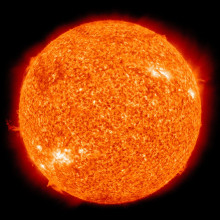
51:04 - QotW: How good is fusion power?
QotW: How good is fusion power?
Phil Sansom has powered through for us, to get an answer about fusion power, to this question from Steve...
Steve - With the advent of fusion power apparently only being 20 years away, how much do we expect to get out of this energy-wise for what we put in? Is it twice as much out or 1000 times as much out? And is it also true that nobody has managed to get out more than they’ve put in to date?"
Phil - Fusion power is nuclear power, but not the kind you’re thinking of - the type from Chernobyl and Fukushima. That type is fission, where the nucleus of an atom gets split into two smaller nuclei, whereas Steve is talking about fusion - that’s two nuclei combining to form one. And according to Steven Cowley, this version - combining two to make one - doesn’t have any of the messy nuclear issues you’d expect.
Steven - It is truly sustainable for millions of years, has minimal waste, is environmentally benign, can be turned on and off at will, and is safe. However, it is hard to do. The fuel needs to be heated to temperatures of about 200 million degrees for the atoms to fuse to make Helium.
Phil - This is the big challenge - fusion just takes so much energy. But it’s such a tempting target to aim for, because it in theory provides a ton of power, and you can get the fuel cheaply and easily from seawater.
Steven - The record for fusion output is held by the Joint European Torus, JET, where 16 million watts of fusion power was generated. However, to sustain the reaction, 24 million watts of heating power was injected into the fuel.
Phil - So yes, it’s true that to date we’ve never got more power out of fusion than we’ve put in. But Steven Cowley is working on an scientific megaproject called the International Thermonuclear Experimental Reactor, or ITER.
Steven - The goal of the fusion experiment ITER being built in southern France is to produce at least ten times as much fusion energy as the energy that goes into the fuel.
Phil - It’ll do this partly thanks to a myriad of technical achievements, and partly thanks to being twice as big as any fusion reactor before. However, there’s a technical point here - while ITER should generate more heat power than it uses, this doesn’t translate to electrical power - which ITER will still use more of than it makes, as evan_au pointed out on our forum. That doesn’t stop Steven from being optimistic for this tech.
Steven - ITER will be followed by commercial fusion electricity-generating plants that will be totally self-sufficient. Fusion power has been anticipated for many years but now we can see the light at the end of the tunnel.
Phil - In the meantime, we may as well take advantage of the handy dandy fusion reactor just a few billion metres away and invest in a little solar power. Thanks Steve and Steven for asking and answering respectively. Next week’s question comes from Jon:
Jon - I just purchased some dart frogs which need to live in high humidity conditions. In order to attain this we basically sealed off the terrariums. The question is whether a really sealed terrarium could provide enough oxygen for the frogs through plant photosynthesis.
Related Content
- Previous Food glorious food
- Next How much power can we get out of fusion?










Comments
Add a comment